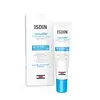What's inside
What's inside
 Key Ingredients
Key Ingredients

 Benefits
Benefits

 Concerns
Concerns

 Ingredients Side-by-side
Ingredients Side-by-side

Water
Skin ConditioningEthylhexyl Methoxycinnamate
UV AbsorberGlycerin
HumectantBis-Ethylhexyloxyphenol Methoxyphenyl Triazine
Skin ConditioningButyl Methoxydibenzoylmethane
UV AbsorberC12-15 Alkyl Benzoate
AntimicrobialIsocetyl Stearate
EmollientUrea
BufferingPhenoxyethanol
PreservativeCetyl Alcohol
EmollientStearyl Alcohol
EmollientOctyldodecanol
EmollientPanthenol
Skin ConditioningSimmondsia Chinensis Seed Oil
EmollientCI 77891
Cosmetic ColorantCarbomer
Emulsion StabilisingXanthan Gum
EmulsifyingBisabolol
MaskingCI 77289
Cosmetic ColorantShorea Stenoptera Seed Butter
EmollientTocopheryl Acetate
AntioxidantAcrylates/C10-30 Alkyl Acrylate Crosspolymer
Emulsion StabilisingSodium Hydroxide
BufferingSteareth-20
CleansingHesperidin Methyl Chalcone
AntioxidantDisodium EDTA
Alcohol Denat.
AntimicrobialParfum
MaskingUbiquinone
AntioxidantLactic Acid
BufferingBiosaccharide Gum-1
HumectantTalc
AbrasiveBHT
AntioxidantSodium Hyaluronate
HumectantLimonene
PerfumingHexyl Cinnamal
PerfumingCI 19140
Cosmetic ColorantChlorhexidine Digluconate
AntimicrobialTropolone
Skin ConditioningN-Hydroxysuccinimide
Skin ConditioningCoumarin
PerfumingCitral
PerfumingPotassium Sorbate
PreservativeDipeptide-2
Skin ConditioningDimethicone/Vinyl Dimethicone Crosspolymer
Skin ConditioningLinalool
PerfumingAlpha-Isomethyl Ionone
PerfumingPalmitoyl Tetrapeptide-7
Skin ConditioningChrysin
Skin ConditioningPalmitoyl Tripeptide-1
Skin ConditioningCitric Acid
BufferingSodium Citrate
BufferingBiotin
AntiseborrhoeicWater, Ethylhexyl Methoxycinnamate, Glycerin, Bis-Ethylhexyloxyphenol Methoxyphenyl Triazine, Butyl Methoxydibenzoylmethane, C12-15 Alkyl Benzoate, Isocetyl Stearate, Urea, Phenoxyethanol, Cetyl Alcohol, Stearyl Alcohol, Octyldodecanol, Panthenol, Simmondsia Chinensis Seed Oil, CI 77891, Carbomer, Xanthan Gum, Bisabolol, CI 77289, Shorea Stenoptera Seed Butter, Tocopheryl Acetate, Acrylates/C10-30 Alkyl Acrylate Crosspolymer, Sodium Hydroxide, Steareth-20, Hesperidin Methyl Chalcone, Disodium EDTA, Alcohol Denat., Parfum, Ubiquinone, Lactic Acid, Biosaccharide Gum-1, Talc, BHT, Sodium Hyaluronate, Limonene, Hexyl Cinnamal, CI 19140, Chlorhexidine Digluconate, Tropolone, N-Hydroxysuccinimide, Coumarin, Citral, Potassium Sorbate, Dipeptide-2, Dimethicone/Vinyl Dimethicone Crosspolymer, Linalool, Alpha-Isomethyl Ionone, Palmitoyl Tetrapeptide-7, Chrysin, Palmitoyl Tripeptide-1, Citric Acid, Sodium Citrate, Biotin
Water
Skin ConditioningParaffinum Liquidum
EmollientButylene Glycol
HumectantPolysorbate 40
EmulsifyingSqualane
EmollientCaprylic/Capric Triglyceride
MaskingSorbitan Palmitate
Emulsifying1,2-Hexanediol
Skin ConditioningBHT
AntioxidantCaprylyl Glycol
EmollientCarbomer
Emulsion StabilisingDisodium EDTA
Oleoyl Dipeptide-15
Skin ConditioningOleoyl Tetrapeptide-31
AntioxidantCI 17200
Cosmetic ColorantRetinal
Skin ConditioningSodium Hydroxide
BufferingTocopheryl Glucoside
EmollientXanthan Gum
EmulsifyingAlternatives
Ingredients Explained
These ingredients are found in both products.
Ingredients higher up in an ingredient list are typically present in a larger amount.
BHT is a synthetic antioxidant and preservative.
As an antioxidant, it helps your body fight off free-radicals. Free-radicals are molecules that may damage your skin cells.
As a preservative, it is used to stabilize products and prevent them from degrading. Specifically, BHT prevents degradation from oxidation.
The concerns related to BHT come from oral studies; this ingredient is currently allowed for use by both the FDA and EU.
However, it was recently restricted for use in the UK as of April 2024.
Learn more about BHTCarbomer is a polymer of acrylic acid. Its main role is to create a gel consistency.
A high amount of carbomer can cause pilling or balling up of products. Don't worry, most products contain 1% or less of carbomer.
Disodium EDTA plays a role in making products more stable by aiding other preservatives.
It is a chelating agent, meaning it neutralizes metal ions that may be found in a product.
Disodium EDTA is a salt of edetic acid and is found to be safe in cosmetic ingredients.
Learn more about Disodium EDTASodium Hydroxide is also known as lye or caustic soda. It is used to adjust the pH of products; many ingredients require a specific pH to be effective.
In small amounts, sodium hydroxide is considered safe to use. However, large amounts may cause chemical burns due to its high alkaline.
Your skin has a natural pH and acid mantle. This acid mantle helps prevent harmful bacteria from breaking through. The acid mantle also helps keep your skin hydrated.
"Alkaline" refers to a high pH level. A low pH level would be considered acidic.
Learn more about Sodium HydroxideWater. It's the most common cosmetic ingredient of all. You'll usually see it at the top of ingredient lists, meaning that it makes up the largest part of the product.
So why is it so popular? Water most often acts as a solvent - this means that it helps dissolve other ingredients into the formulation.
You'll also recognize water as that liquid we all need to stay alive. If you see this, drink a glass of water. Stay hydrated!
Learn more about WaterXanthan gum is used as a stabilizer and thickener within cosmetic products. It helps give products a sticky, thick feeling - preventing them from being too runny.
On the technical side of things, xanthan gum is a polysaccharide - a combination consisting of multiple sugar molecules bonded together.
Xanthan gum is a pretty common and great ingredient. It is a natural, non-toxic, non-irritating ingredient that is also commonly used in food products.
Learn more about Xanthan Gum